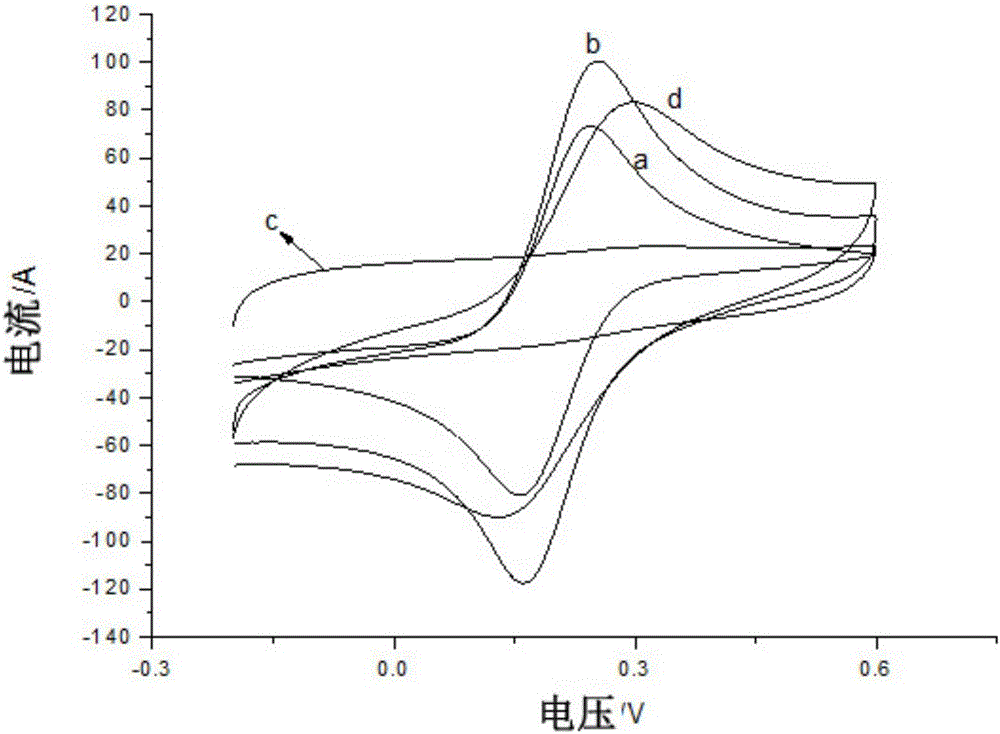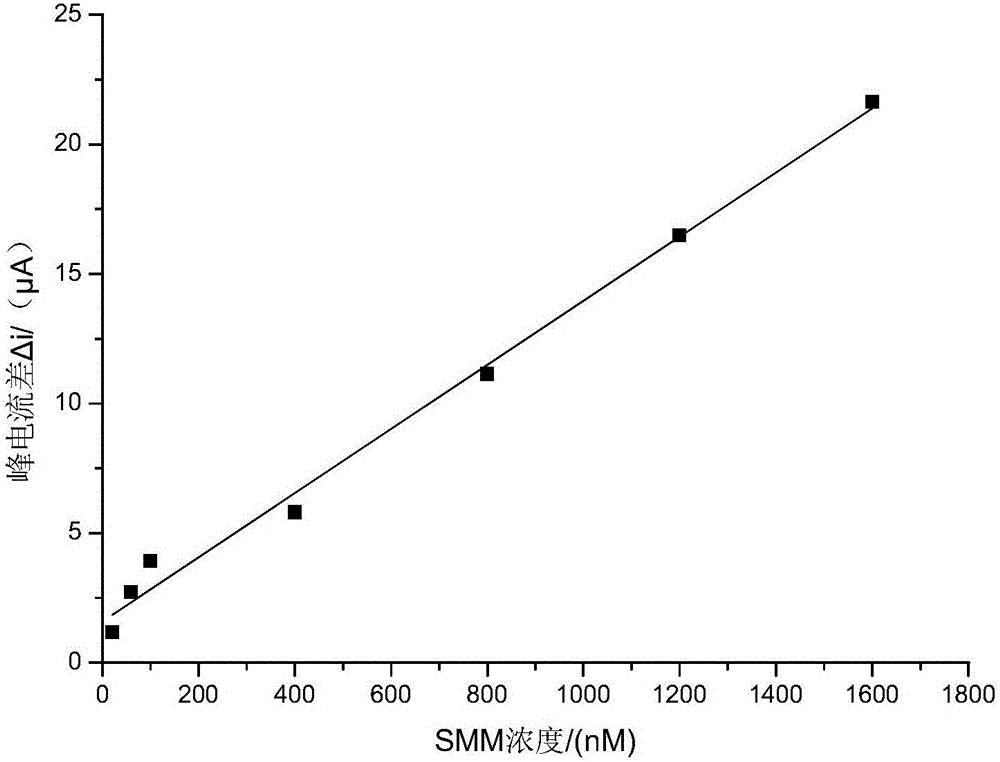Molecularly imprinted electrochemical sensor for detecting trace sulfamonomethoxine
A technology of sulfamethoxine and molecular imprinting, applied in the direction of material electrochemical variables, etc., can solve the problems that there is no relevant research on trace amount of sulfamethoxine, and achieve easy automation of detection, good reproducibility and stability , Improve the effect of sensitivity and selectivity
- Summary
- Abstract
- Description
- Claims
- Application Information
AI Technical Summary
Problems solved by technology
Method used
Image
Examples
Embodiment 1
[0020] Example 1: Construction of the molecularly imprinted electrochemical sensor for detecting trace amounts of sulfamethoxine according to the present invention, characterized in that the molecularly imprinted electrochemical sensor is prepared by the following method:
[0021] (1) Pretreatment of glassy carbon electrodes
[0022] The glassy carbon electrodes were sequentially coated with 0.5 μm and 0.05 μm Al 2 o 3 The powder was polished on suede, rinsed with ultrapure water, and then ultrasonically cleaned in ethanol and water for 10 minutes, and then the electrode was scanned in potassium ferricyanide until a reversible cyclic voltammetry peak was obtained.
[0023] (2) Preparation of rGO (reduced graphene oxide) suspension
[0024] Take 0.002g of rGO and 2mL of dimethylformamide in a 10mL beaker, ultrasonically disperse for 2h to obtain a uniformly dispersed rGO suspension dispersion, and store it in a refrigerator at 6°C until use.
[0025] (3) Construction of mole...
Embodiment 2
[0027] Example 2: Cyclic voltammetry characterization of the molecularly imprinted electrochemical sensor for detecting trace amounts of sulfamethoxine according to the present invention
[0028] Since the imprinted holes in the membrane can serve as channels for electron transfer, using K 3 [Fe(CN) 6 ] as a probe, according to the magnitude of its current to characterize the surface properties of various electrodes. like figure 1 shown, different electrodes at 5mM K 3 [Fe(CN) 6 ] The cyclic voltammograms in the solution are significantly different. Curve a is the cyclic voltammogram of the bare electrode, with obvious redox peaks. As shown in curve b, when a layer of rGO composite is modified on the surface of the glassy carbon electrode, the peak current increases significantly, indicating that the modification of the rGO composite can promote electron transfer on the electrode surface and increase the current signal. As shown in curve c, when the MIP film is formed, t...
Embodiment 3
[0029] Example 3: Scanning Electron Microscopy Characterization of Molecularly Imprinted Electrochemical Sensing for Detection of Trace Sulfamethoxine According to the Present Invention
[0030] The microstructure of different modified electrodes was characterized by scanning electron microscopy. like figure 2 As shown in a, the surface of the electrode is smooth after the molecular imprinted membrane is modified on the electrode surface, indicating that the imprinting effect is good; after elution, the template molecules are eluted, leaving many holes on the surface of the molecularly imprinted membrane, so the surface becomes rough (see figure 2 b), so there will be a current response peak when scanning.
PUM
 Login to View More
Login to View More Abstract
Description
Claims
Application Information
 Login to View More
Login to View More - R&D
- Intellectual Property
- Life Sciences
- Materials
- Tech Scout
- Unparalleled Data Quality
- Higher Quality Content
- 60% Fewer Hallucinations
Browse by: Latest US Patents, China's latest patents, Technical Efficacy Thesaurus, Application Domain, Technology Topic, Popular Technical Reports.
© 2025 PatSnap. All rights reserved.Legal|Privacy policy|Modern Slavery Act Transparency Statement|Sitemap|About US| Contact US: help@patsnap.com



